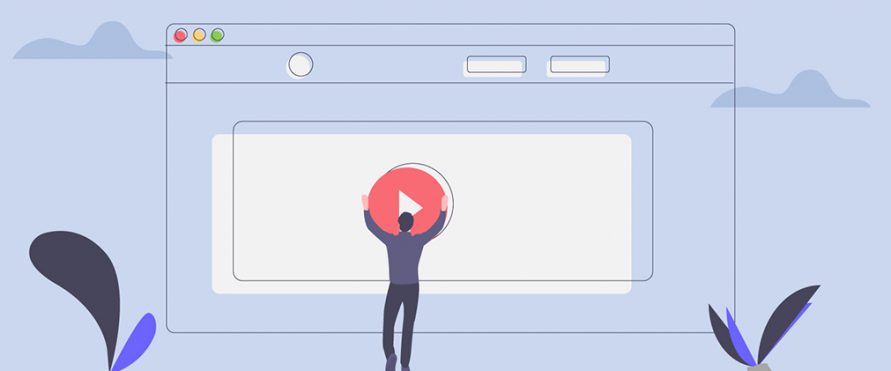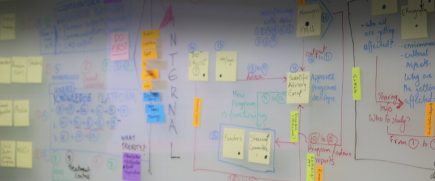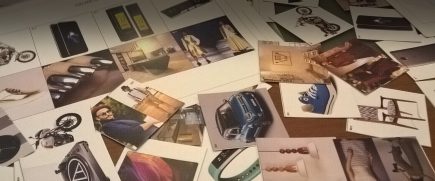Media & Entertainment UI UX Design: Experiences for the Streaming-First Era
The media landscape has fundamentally changed. American users now spend an average of three hours daily on OTT platforms, with over 70% of them binge-watching content*. Global OTT revenue is projected to reach $243 billion by 2028*, while traditional broadcast continues its decline. The question isn’t whether audiences will stream, it’s whether your platform will be the one they choose to use.
The US OTT market is projected to grow from $61.9 billion in 2024 to $112.7 billion by 2029*. The technology exists. The content exists. What separates successful platforms is the experience itself.
AI is reshaping content creation and discovery. AI spending in media and entertainment reached $25.98 billion in 2024 and is expected to hit $99.48 billion by 2030*. Generative AI now assists in scriptwriting, music composition, and hyper-personalized recommendations. But algorithms can only go so far. It is content discovery UX design that determines whether users find what they’re looking for.
Sophisticated algorithms fail when users can’t navigate to content. Multi-device ecosystems fracture without consistent interaction patterns. As a media and entertainment UI UX design agency, we bridge the gap between platform capability and actual usage—through streaming app UI/UX design, news app design, and broadcast UX design that makes discovery intuitive and experiences coherent across every screen.
Challenges Defining Media's Next Phase
1. Multi-Platform Fragmentation
Streaming now commands 46% of U.S. viewing time*, surpassing broadcast and cable combined. 83% of Americans use streaming services**, yet attention fragments across platforms. The challenge isn’t building another service—it’s creating OTT UX design services that make yours the platform users actually open. When content parity is the baseline, content discovery UX design becomes the differentiator.
2. Personalization Without Intrusion
64% of consumers globally prefer companies that tailor experiences to their needs,* yet privacy concerns remain high. The opportunity lies in streaming app UI UX design that surfaces relevant content without feeling invasive. Effective video player UX and content recommendation design must balance algorithmic power with user control—showing users why content appears and giving them agency over their data.
3. Creator Economy Competition
Over 207 million content creators now compete for attention globally*. These creators built direct audience relationships through authenticity and consistent dialog—a challenge for traditional media companies built on one-way broadcast models. Second-screen experience design and smart TV app UX must evolve to accommodate interactive, community-driven content formats that audiences increasingly expect.
4. Privacy and Access Tensions
Audiences demand both seamless global access and transparent data practices. Regulatory frameworks lag user expectations—many bypasses geo-restrictions through VPNs while simultaneously demanding privacy controls. News app design and broadcast UX design must navigate this: building trust through clear data practices while delivering the frictionless, global access users expect.
Where Design Drives Platform Success?
Media companies face a pivotal moment. Content libraries expand, but attention fragments. Technology enables personalization, but users demand privacy. The platforms that succeed will be those where design bridges these tensions.
1. Unified Multi-Device Experiences
Users start content on mobile during commutes, continue on tablets at home, and finish on smart TVs. This isn’t a scenario, it’s daily behaviour. Smart TV app UX and second-screen experience design must handle these transitions seamlessly. Context-aware interfaces remember preferences, sync progress automatically, and adapt UI patterns to each screen size without forcing users to relearn navigation. Poor handoffs between devices kill engagement faster than missing content.
2. Discovery That Actually Works
Content libraries now exceed 10,000 titles on major platforms. Browsing is obsolete; discovery is everything. Content discovery UX design and content recommendation design must go beyond algorithmic suggestions. Effective streaming app UI UX design combines behavioural data with intuitive browsing—allowing users to stumble upon content serendipitously while also surfacing precisely what they’re looking for. Personalization UX works when it feels helpful, not surveillant.
3. Performance as Experience
In 2025, 72% of viewers abandon a video stream if it buffers for just 2–3 seconds*. Speed isn’t just technical today, it’s experiential. Video player UX must prioritize instant playback, predictive loading, and responsive controls. Clean layouts, optimized navigation, and contextual design reduce cognitive load. In a world where attention is scarce, every second of latency costs engagement. Our OTT UX design services ensure performance translates to perceived speed.
4. Transparency Builds Trust
Consumers increasingly understand their products, not just customers. Opaque data practices erode trust faster than poor content recommendations. News apps and broadcast platforms must surface privacy controls prominently, not bury them in settings. Show users what data is collected, why, and give them meaningful control. Visual cues that signal security, clear consent flows, and transparent algorithms separate platforms users trust from those they abandon.
Design separates platforms that scale from those that stagnate. In a market where content is abundant and attention is scarce, understanding user behaviour, not just stated preferences, but actual usage patterns and unspoken friction points—determines which platforms earn daily engagement and which get deleted after the free trial.
Leading the way through Futuristic Design Experiences
1
Cord-Cutting leading To New Business Models: Going digital and online
Change in viewership medium
Watch as per preference
Think Design’s Recommendation
2
Rise of the Connected Audience and demand for improved user experience
Demographic Demands
Demand for better-curated content
Need for Personalized recommendations
Think Design’s Recommendation
3
Strategic marketing as the norm to market advantage
Multi-platform marketing
Advertising to get Smarter
Think Design’s Recommendation
4
Futuristic technology driving Innovation and creativity
Artificial Intelligence forays
Advent of Virtual And Mixed Reality
Autonomous vehicles as powerful media-delivery devices
*Source: 2018 Media and Entertainment Outlook”, Delloite
Think Design’s Recommendation
Think Design's Approach to Media & Entertainment Experiences
1. Design for Fragmented Viewing Patterns
While binge-watching remains popular, 19% of viewers now prefer weekly releases*. Users switch between devices mid-episode, pause for days, then resume. Successful platforms accommodate both behaviours. We approach designs for continuity—seamless progress tracking, intelligent resume points, and interfaces that adapt whether users consume content in marathons or intervals. Video player UX must support both patterns without forcing users to choose.
2. Map Complete User Journeys, Not Just Sessions
Entertainment journeys span discovery, evaluation, consumption, and sharing—often across multiple sessions and devices. A user might see a trailer on social media, add it to their watchlist on mobile, start watching on a tablet, and finish on a smart TV days later. Our OTT UX design services map these extended journeys, identifying friction points most platforms miss. Smart TV app UX and second-screen experience design must feel connected, not fragmented.
3. AI-Driven, Human-Cantered
Voice search, predictive loading, and contextual recommendations aren’t futuristic—they’re table stakes. But intelligence means nothing if it feels opaque. We design to make AI transparent: showing users why content appears, allowing correction, and learning from implicit signals. Personalization UX succeeds when users feel understood, not surveilled.
4. Design for Multi-Modal Interactions
Users navigate with remotes, voice commands, gestures, and touch—sometimes within the same session. This complexity demands intentional design. Our work considers every input method: ensuring voice commands surface the same content as text search, that gesture controls feel natural on large screens, and that touch interactions remain precise on mobile. Consistency across modalities prevents cognitive overload.
5. Optimize for Consumption Quality
Content is king, but presentation determines whether users watch. Our media app UI design services for Android TV prioritize reading clarity, minimize distractions during playback, and surface contextual information only when relevant. We test video player interface design with real users—measuring not just completion rates but comprehension and satisfaction.
Partnerships impacting News, Media & Entertainment consumption across millions of users







Creating Value in Every Industry
News media & Entertainment
Know More
Enterprise & IT
ERP, Utilities, HRMS, Planning tools, Data & Analytics, LMS, Enterprise systems, Productivity suites.
Know More
Healthcare & Lifesciences
Medical devices, Hospital management systems, Pharma, Wearable tech, Personal healthcare, Fitness, Wellness.
Know More
Networks & Smart devices
Telecom, Home automation, Data networks, M2M, IoT, Utilities, Law enforcement, Defense & Border security.
Know More
Education & Edtech
Institutions, Portals, Apps, Learning management, Gamified learning, MOOCs, Universities, Learning centers.
Know More
Banking & Financial Services
Fintechs, Banks, Insurance, Payments, Wallets, Lending, Trading, Investment, Blockchain, Currencies, Wealth management.
Know More
End-to-End Design Expertise




